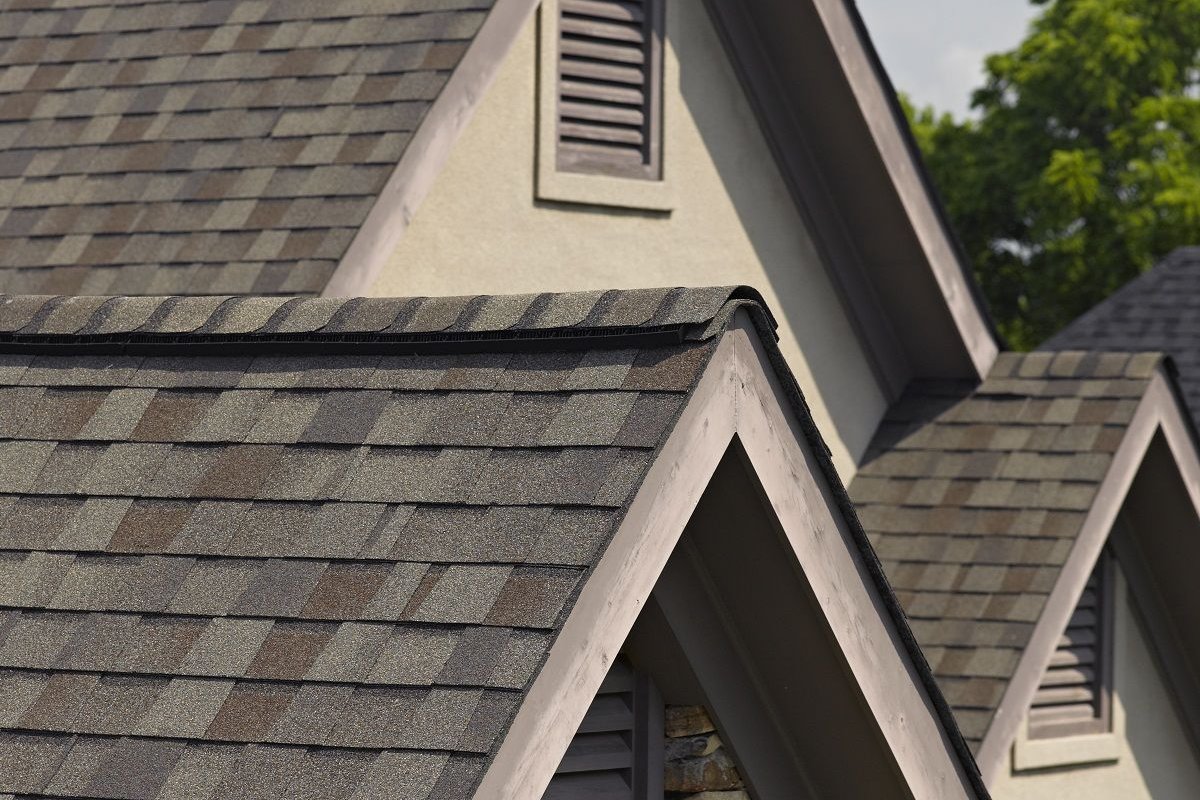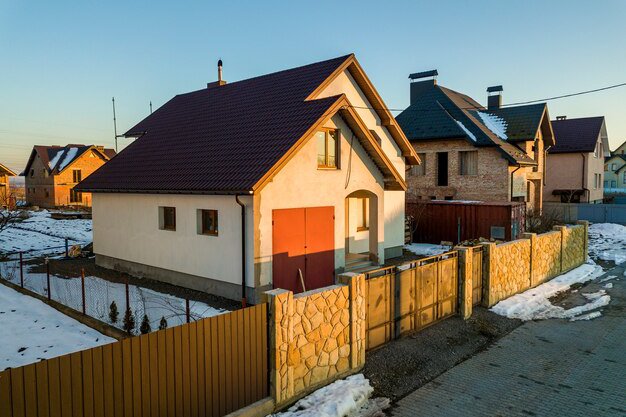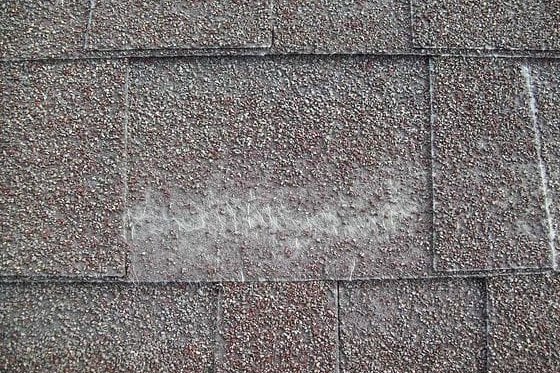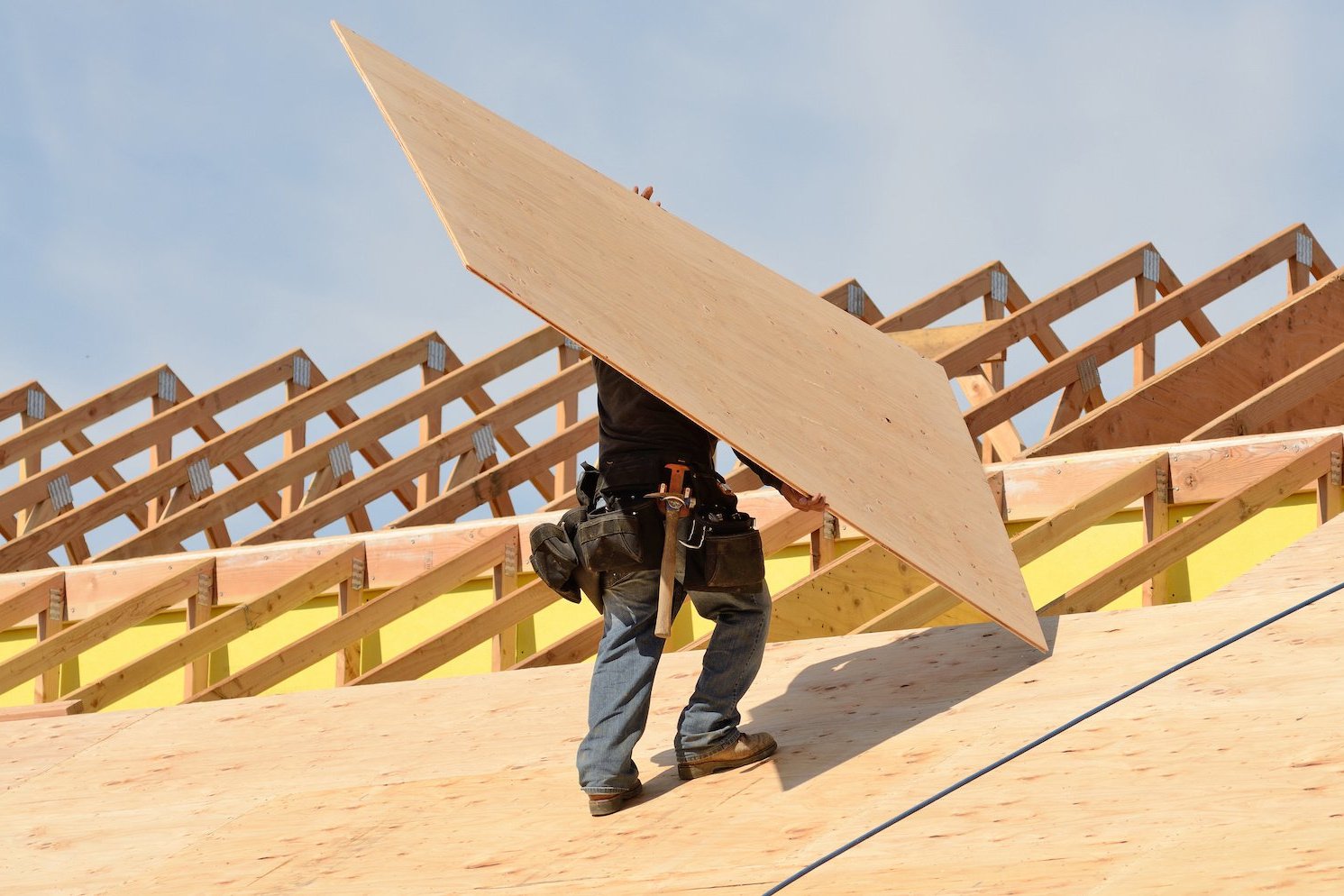Flat Roof Maintenance & Common Issues in Wilsonville, Oregon
Flat roofs, also known as low-slope roofs, are a popular choice for many modern and contemporary homes, as well as additions and garages, offering a distinct aesthetic and practical space for HVAC units or even rooftop decks. However, unlike their steeply sloped counterparts, flat roofs require specific maintenance considerations due to their minimal pitch. Water drains much slower, and debris tends to accumulate more readily. For homeowners in Wilsonville, Oregon, understanding the nuances of flat roof care is essential to preventing costly damage and ensuring the longevity of their roofing system in our regional climate. This guide will walk you through the best practices for maintaining your flat roof and help you identify common issues before they become major problems.
Understanding Flat Roof Systems
Before diving into maintenance, it's helpful to understand the basic types of flat roofing systems commonly found on residential properties. While truly "flat" roofs are rare (they typically have a slight slope for drainage), the term refers to roofs with a pitch of less than 10 degrees. The primary difference from steep-slope roofs is how they handle water – relying on a waterproof membrane rather than shedding water quickly via gravity.
Common residential flat roof materials include:
- Built-Up Roofing (BUR): Layers of asphalt or coal tar pitch alternated with plies of reinforcing fabrics, topped with a layer of gravel or coating. One of the oldest types, known for durability.
- Modified Bitumen (Mod-Bit): Asphalt with modifiers added for flexibility and strength, often installed in rolls that are heated (torch-applied) or adhered with adhesives.
- EPDM (Ethylene Propylene Diene Monomer): A durable synthetic rubber membrane, often called "rubber roofing." It's typically installed in large sheets and sealed at the seams.
- TPO (Thermoplastic Polyolefin): A single-ply membrane known for its energy efficiency and durability. Seams are typically heat-welded.
- PVC (Polyvinyl Chloride): Similar to TPO, a single-ply membrane known for durability and resistance to chemicals and fire. Seams are heat-welded.
Each material has its own lifespan and specific maintenance needs, but the core principles of cleaning, inspection, and addressing issues promptly apply to all.
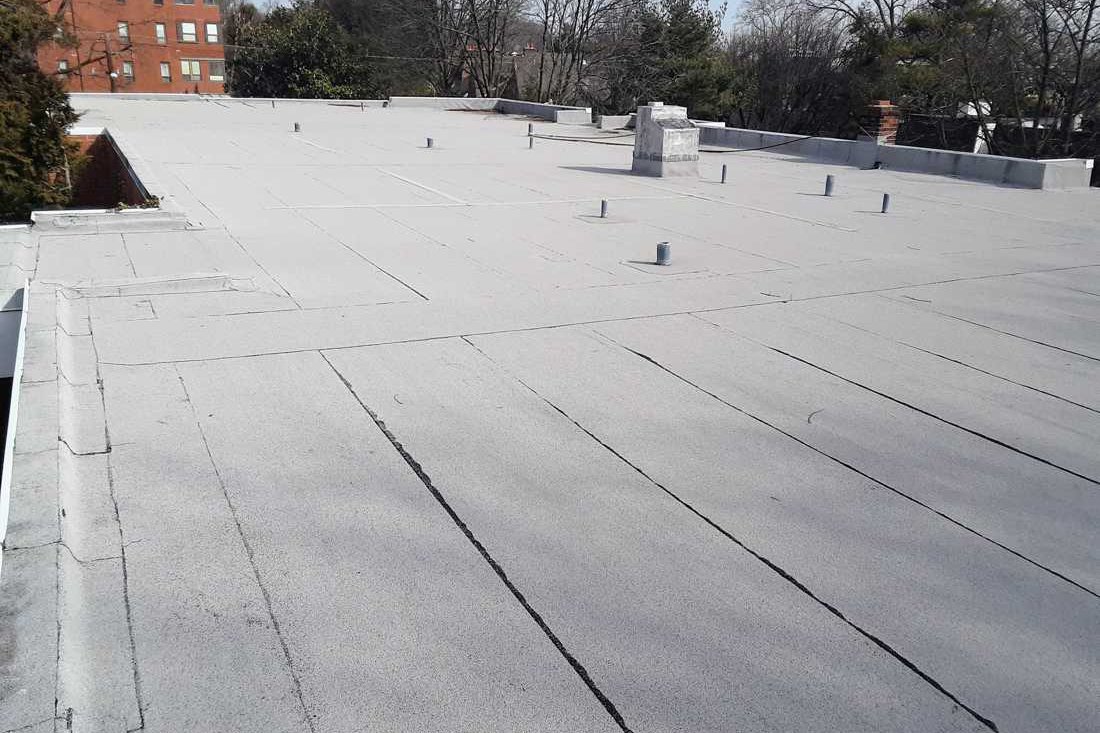
Essential Flat Roof Maintenance Practices
Regular, proactive maintenance is the single most important factor in maximizing the lifespan of a flat roof and preventing leaks. Neglecting a flat roof, even for a short period, can lead to water infiltration and significant structural damage.
1. Routine Cleaning
Debris is a flat roof's enemy. Leaves, branches, dirt, and other organic matter accumulate easily on a low-slope surface. This debris traps moisture, encourages moss and algae growth, and can block drainage paths.
- Frequency: Aim to clean your flat roof at least twice a year, typically in the late fall after leaves have fallen and again in the spring. More frequent cleaning may be necessary if your property is surrounded by trees.
- Process:
- Safety First: Always prioritize safety. Use a stable ladder, wear appropriate footwear with good grip, and ideally, have someone else present. Consider hiring a professional if you are uncomfortable working at heights or accessing your roof.
- Remove Large Debris: Start by carefully removing larger items like branches and piles of leaves by hand or with a soft broom.
- Sweep or Blow: Use a soft-bristle broom or a leaf blower to clear away smaller debris, dirt, and granules (if applicable to your roof type). Be gentle to avoid damaging the membrane surface.
- Clear Drainage: Pay special attention to drains, scuppers, and gutters connected to the flat roof. Ensure they are completely clear of any obstruction. Blocked drains are a leading cause of flat roof problems.
Regular cleaning is crucial for flat roofs, especially in areas prone to falling leaves and debris. If you're planning a major roof cleaning or evaluation and want to understand the potential costs involved for future maintenance or repairs, you can start with a quick estimate.
Get your free instant roof estimate
2. Thorough Inspections
Visual inspection is key to catching problems early. You should inspect your flat roof after cleaning, after any significant weather event (heavy rain, wind storms), and periodically throughout the year.
- What to Look For:
- Ponding Water: Any standing water that remains on the roof surface 48 hours after rain is considered ponding. This is a major issue as it puts stress on the membrane and deck and can lead to leaks.
- Membrane Condition: Look for cracks, blisters (bubbles), wrinkles, punctures, or tears in the roofing membrane. Check for signs of wear, especially in high-traffic areas or areas where objects might rub against the surface.
- Seams and Flashing: Flat roofs are particularly vulnerable at seams (where membrane sections are joined) and flashing (materials used around edges, vents, pipes, chimneys, and walls). Check for lifting, separation, cracks, or damage to sealant.
- Drainage System: Inspect drains, scuppers, gutters, and downspouts for blockages, damage, or signs of corrosion. Ensure water is flowing freely away from the roof.
- Penetrations: Check around all objects that penetrate the roof surface (vents, pipes, skylights, HVAC units) for gaps in sealant or flashing damage.
- Parapet Walls: If your flat roof has parapet walls (low walls around the perimeter), inspect the coping (the cap on top of the wall) and the flashing where the roof membrane meets the wall.
- Signs of Moss or Algae: While some flat roofs are more resistant, moss and algae can still grow, especially in damp, shaded areas. This growth can trap moisture and degrade certain membrane types.
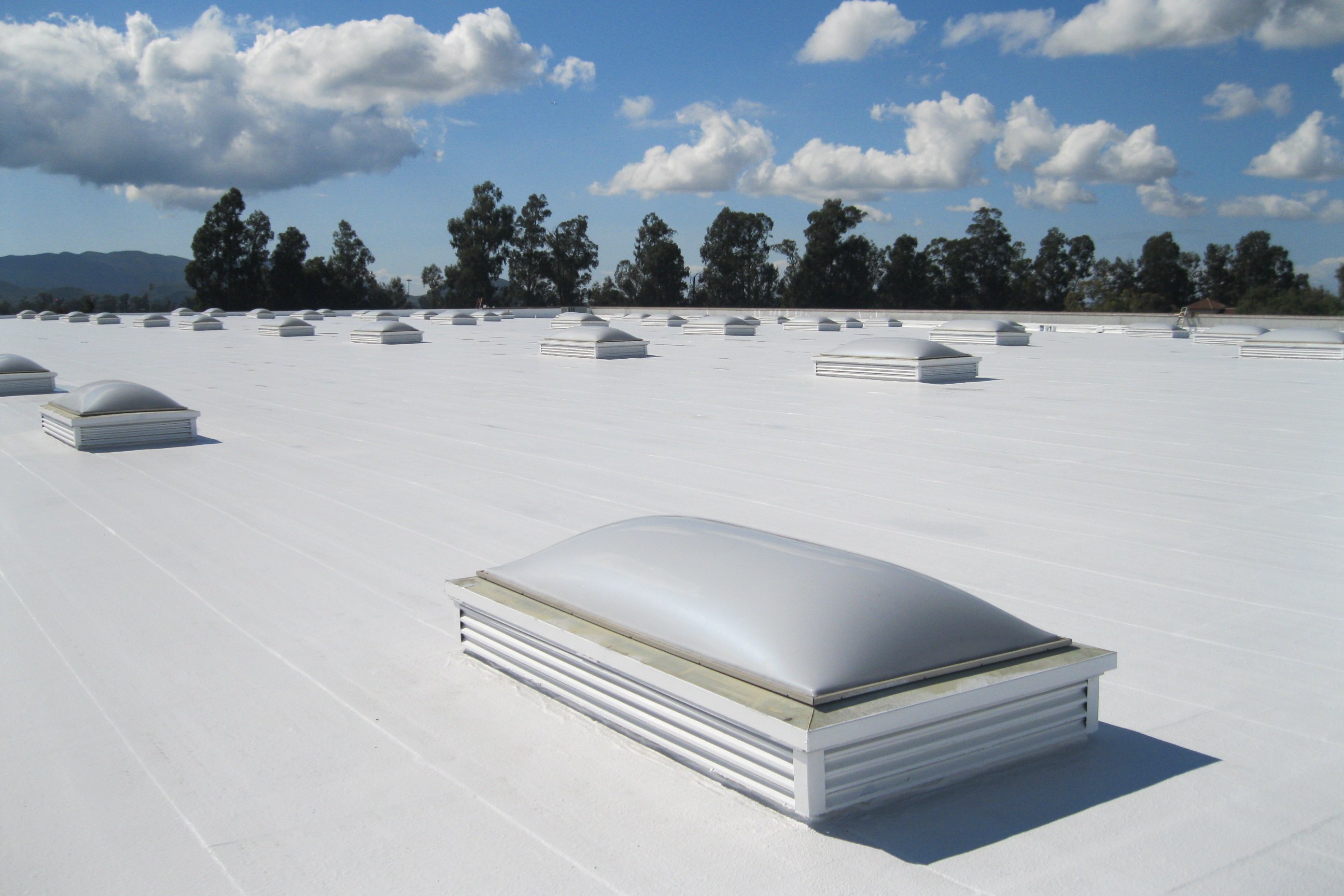
3. Addressing Drainage Issues
Proper drainage is non-negotiable for a flat roof. Ensure that the roof has an adequate slope (even if minimal) and that the drainage system (internal drains, scuppers, gutters) is functioning perfectly. If you notice areas where water consistently pools beyond 48 hours, this indicates a drainage problem that needs professional assessment. It could be due to structural deflection, clogged drains, or improper installation.
4. Managing Vegetation and Overhangs
Trees and other vegetation overhanging the roof can contribute significant amounts of debris, increasing the cleaning burden and the risk of drainage issues. Trim overhanging branches to minimize leaf and branch accumulation.
5. Limiting Foot Traffic
Avoid walking on your flat roof unnecessarily. Foot traffic can damage the membrane, especially in hot weather when some materials are softer, or if debris is present. If access is needed for maintenance or servicing equipment, wear soft-soled shoes and be mindful of where you step.
Important Safety Note: Roof work is inherently dangerous. If you are not comfortable or experienced with working at heights, or if your roof shows signs of significant damage, it is always safer to contact a qualified roofing professional for inspections and maintenance.
Identifying Common Flat Roof Issues
Even with diligent maintenance, flat roofs can develop problems over time. Recognizing the signs early is crucial for timely and less expensive repairs.
1. Ponding Water
As mentioned, ponding water is a major red flag. It adds significant weight to the roof structure, stresses the membrane, and accelerates the degradation process. The constant presence of moisture can lead to leaks and even structural failure if not addressed.
2. Leaks
Leaks are the most obvious sign of a problem, but tracing the source on a flat roof can be challenging. Water can enter through a small breach in one spot and travel horizontally along the deck or under the membrane before appearing inside the building elsewhere. Common leak points include damaged flashing, compromised seams, punctures, or areas of degraded membrane.
3. Membrane Damage
Various types of damage can occur to the flat roof membrane:
- Cracking: Often due to aging, UV exposure, or expansion/contraction. Cracks compromise the waterproof barrier.
- Blistering: Bubbles forming under the membrane, often caused by trapped moisture or air expanding in heat. Blisters are weak points that can eventually crack.
- Punctures or Tears: Can be caused by dropped tools, sharp debris, animal activity, or foot traffic. Even small punctures can lead to significant leaks.
- Shrinkage: Some membrane types can shrink over time, pulling away from edges or penetrations and stressing seams and flashing.
4. Flashing and Seam Failure
These are the most common areas for leaks on a flat roof.
- Flashing: Around chimneys, vents, skylights, parapet walls, and where the flat roof meets a vertical wall, flashing creates a seal. If flashing is bent, cracked, loose, or the sealant fails, water will find a way in.
- Seams: The points where sections of membrane are joined are potential weak spots. Seams can separate, lift, or crack due to age, improper installation, or membrane shrinkage.
5. Moss and Algae Growth
In damp climates like Wilsonville, moss and algae can thrive on flat roofs, especially on BUR and Mod-Bit systems with gravel surfacing or on shaded single-ply membranes. Moss holds moisture against the roof surface, which can accelerate degradation of some materials and interfere with drainage. While less structurally damaging than ponding or punctures, it indicates a need for cleaning and potentially a moss treatment suitable for your specific roof material.
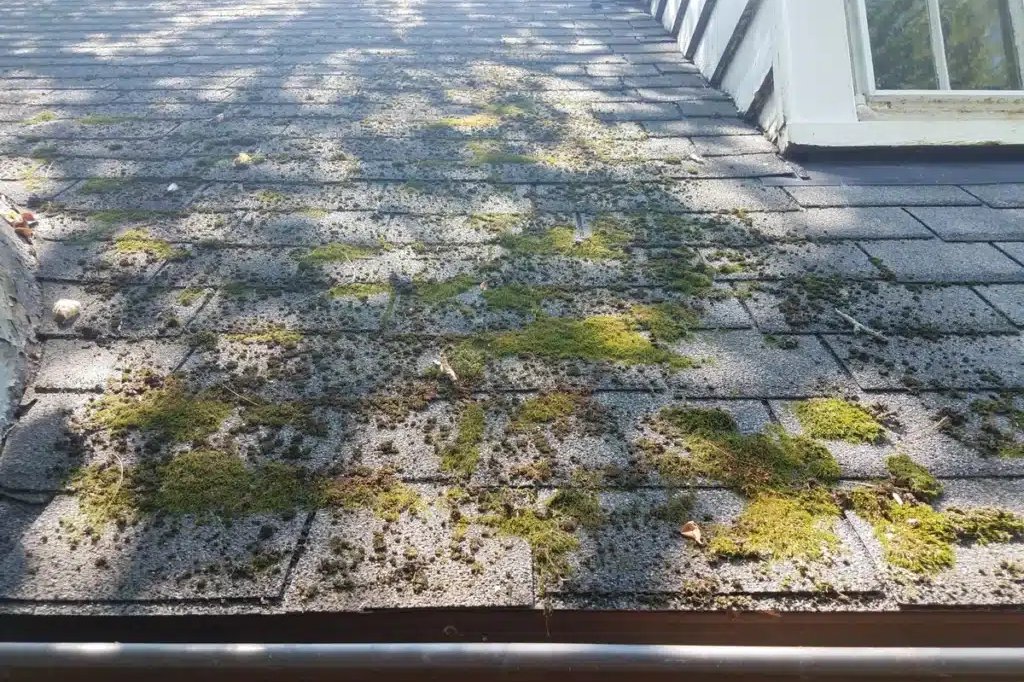
While this image shows moss on shingles, moss is also a common issue on flat roofs, trapping moisture and potentially damaging the membrane.
6. Drainage System Backups or Damage
Clogged drains, damaged scuppers, or improperly sloped gutters prevent water from leaving the roof surface. This leads to ponding water, increasing the risk of leaks and structural load. Ensure your drainage system is free-flowing and in good repair.
When to Seek Professional Assistance
While homeowners can handle routine cleaning and visual inspections, many flat roof issues require the expertise and specialized tools of a professional roofing contractor.
- Active Leaks: Any sign of water intrusion indoors demands immediate professional attention. The longer you wait, the more extensive and costly the damage will be.
- Significant Membrane Damage: Large cracks, tears, widespread blistering, or significant seam separation are beyond DIY repair capabilities and require professional patching or system repair.
- Ponding Water Issues: If ponding persists after cleaning drains, it indicates a more complex problem with the roof's slope or structure that needs professional assessment and correction.
- Storm Damage: High winds can lift or tear membranes or flashing. Hail can puncture certain materials. After a significant storm, a professional inspection is highly recommended.
- Complex Repairs: Repairing flashing around penetrations, addressing issues at parapet walls, or making repairs to specific membrane types often requires specialized knowledge and materials.
For urgent issues like active leaks or damage from storms, prompt professional attention is critical. You can quickly connect with qualified local roofers who can assess and address the problem.
Book a roofing appointment
For non-urgent situations, such as planning a future roof replacement, budgeting for maintenance, or getting a general idea of your roof's condition and potential costs, an instant estimate can be a valuable first step.
If you're planning ahead or curious about potential costs for maintenance or replacement, get a quick, no-obligation estimate.
Get your free instant roof estimate
DIY vs. Professional Maintenance and Repair
Deciding whether to tackle a task yourself or hire a professional depends on the specific job, your comfort level with heights, your knowledge of flat roof systems, and the potential risks involved.
DIY Tasks (with caution and safety measures):
- Routine surface cleaning (removing leaves, dirt)
- Clearing easily accessible drains and scuppers
- Basic visual inspections from a safe vantage point or with extreme caution on the roof (if comfortable and safe)
Tasks Best Left to Professionals:
- Any task requiring significant time working on the roof surface
- Repairs to the membrane (patching, sealing)
- Repairing or replacing flashing
- Diagnosing and fixing the cause of ponding water
- Addressing leaks
- Moss or algae treatments requiring specific chemicals or techniques
- Post-storm inspections
The Benefits of Hiring a Professional:
- Expertise: Professionals have the knowledge to correctly identify issues and understand the best repair methods for different flat roof materials.
- Safety: They have the proper safety equipment and training to work safely at heights.
- Tools and Materials: They have access to specialized tools and high-quality roofing materials suitable for flat roofs.
- Warranty: Professional repairs often come with a warranty, providing peace of mind.
- Efficiency: They can often complete the work more quickly and effectively than a DIYer.
Cost Considerations for Flat Roof Care
Maintaining a flat roof is an investment that pays off by extending its lifespan and preventing catastrophic failures. While we cannot provide specific prices, understanding the factors that influence cost is helpful for budgeting.
Routine cleaning and minor debris removal are relatively inexpensive, whether you do it yourself or hire a handyman. However, professional services for inspections, repairs, or replacements will be a more significant expense. Costs are influenced by:
- The type of flat roofing material (some are more expensive to repair or replace than others).
- The size and accessibility of the roof.
- The extent and nature of the damage (a small patch is cheaper than widespread membrane replacement).
- The complexity of the roof (more penetrations and transitions increase complexity).
- Labor rates in your area.
Investing in regular maintenance and addressing small issues quickly is always more cost-effective than waiting until a major leak or structural problem develops. Preventative care minimizes the likelihood of needing expensive emergency repairs or premature replacement.
Frequently Asked Questions About Flat Roofs
Here are some common questions homeowners have about flat roof maintenance and issues:
Q: What are the best practices for maintaining a flat roof, and what are common issues to look out for?
A: Best practices for maintaining a flat roof include regular cleaning to remove debris, inspecting seals and flashing for cracks, and checking for standing water. Common issues to look out for include ponding water, which can cause leaks and roof damage, and aging or damaged membrane materials. Promptly addressing any signs of wear or damage can help prevent more extensive repair needs.
Q: How long do flat roofs typically last?
A: The lifespan of a flat roof varies significantly based on the material type, quality of installation, climate, and maintenance. BUR and Modified Bitumen roofs might last 10-20 years, while EPDM, TPO, and PVC membranes can last 20-30 years or even longer with proper care.
Q: Can I walk on my flat roof?
A: It's generally best to limit foot traffic on flat roofs to necessary maintenance or inspections. Always wear appropriate footwear and be cautious. Excessive walking can damage the membrane.
Q: How do I know if my flat roof leak is serious?
A: Any interior sign of water (stains on the ceiling or walls, dripping water) indicates a serious problem that needs immediate professional attention. Even small leaks can lead to mold growth and structural damage over time.
Q: Is moss harmful to a flat roof?
A: Yes, moss can be harmful. It holds moisture against the roof surface, which can degrade some materials and interfere with drainage. It should be safely removed, and steps taken to prevent its return.
Protecting Your Flat Roof Investment
Maintaining a flat roof requires vigilance and consistent effort, but the rewards are a dry, structurally sound home and the maximum possible lifespan for your roofing system. Regular cleaning, thorough inspections, and promptly addressing any signs of distress are your best defenses against costly damage. While some tasks are manageable for the prepared homeowner, recognizing when a problem requires professional expertise is critical for safety and effective repair. By understanding the common issues and staying proactive with maintenance, you can ensure your flat roof continues to protect your home for years to come.
